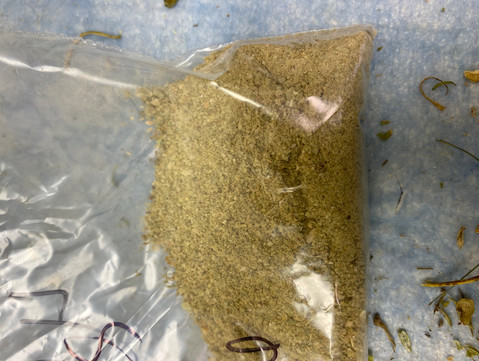Well, it's been a while since my last post as life tends to find a way to push back some of the things I WANT to do and replace them with things I NEED to do. I guess that's called being an adult. If you can remember my last post, good for you because I couldn't even remember what I wrote about! In case you don't, I wrote about my "season of change" as it seemed like several big life changes were happening at that time. Both fortunately and unfortunately, it seems that my season of change has lasted through a couple more seasons than expected!
In my last post, my biggest change was continuing my education by starting a Master's degree in Plant Science. I started my project this past summer observing how different gardening methods would effect soil health as well as production yield and nutritional concentrations and the research will last for a couple years. I had well over 1,000 plants of both okra and green beans to measure and harvest this summer and will replicate my project next summer. I have had a blast working with that and came out of my first semester with decent grades as well. With this high intensity project, I will be directing most of my time next summer to gather the most data that I can - and that leads me to my next point of change.
For those of you that may be interested in what I am working on for my thesis project, I'll try to sum in up real quick. Although I haven't yet come up with a finalized title for my project, it will read something like, "Observing Changes in Soil Health and Vegetable Nutrient Levels Under Various Land Management Strategies". My Christmas break, along with other graduate students and faculty members, ended a little bit sooner than most. I am running tests in the lab for my first year's data I collected throughout the summer. I will do pH tests on the soil, macronutrient tests through atomic absorption, and also tests on green beans and okra pods for nutritive value. From my few days working with others in the lab, I found out very quickly that most of the terms that were being thrown around went straight over my head, and stayed there. Others wear lab coats and I show up in overalls and a ball cap - go figure.
All jokes aside, I truly am enjoying learning about these processes and am excited to see the results of my project over the next few years. I've been surrounded by students and faculty that are very willing to help and make all the tedious processes seem a little less tedious. Below are just a couple pictures of what I am working on in the lab. I haven't been able to take many, but here I am grinding up over 40 samples of green bean and okra pods in a coffee grinder to prepare them for a nutrient analysis test that will happen in a few days.
Back at the garden, all the dead sunflower stalks, radish tubers, and all the other species out there were mowed down to the ground. As I walked around looking at the field after it was cut, I found a couple neat things out there that I was able to snap pictures of. One was of a decaying radish, which looks fairly interesting in my opinion. Radishes store a decent amount of nitrogen in their tubers, so as this one has taken up nitrogen from deep down in the soil profile during the growing season, it is now decomposing on the soil surface, releasing that stored nitrogen. Although all of that nitrogen may not be available to plants right away, this is the beginning of nutrient cycling, one of my big goals of this experiment.

Another thing I saw was the abundance of species STILL growing under all of the tall, dead plant material. I saw clover, buckwheat, radish, rapeseed, and more still trying to grow in December. Having the upper canopy species still standing through some of the winter has helped protect some of the lower canopy species from extreme winter conditions. I am very glad to be able to say that I still have root systems in that field even though it very bare! I am still not very sure about how seeds are stratified and what species needs winter stratification, so I was surprised to see very small seedlings from the seed of the plants that I planted in May. I'll be interested to see what other seeds are laying out there just waiting to sprout!

With an added responsibility of a thesis project on my plate, I found out last year that it was a challenge to give my research plots the attention they deserve while also managing my two-acre garden in Sparta. This is disappointing because not only do I want to continue to work in large-scale vegetable production, but I would also like to add another location to increase production! So what's the plan for 2020?
My plan now for the 2020 season is to focus more on "non-perishable" crops, and the scale has yet to be determined. I had wonderful success with sunflowers and pearl millet last year selling them to local florists. I plan to focus on planting more pumpkins, sunflowers, millet, turnips, and various flowers to see if I can be successful with these crops. Although it's not exactly what I had planned for this next year, I believe that it will be a good route to take as I focus on completing school. I will still have ample green beans and okra, which I hope to be able to market as well.
Every year has been better than the last as I learn and do what I think is fun. I have no doubt that this coming season will be enjoyable and a great teaching opportunity as I try to make the most out of all that I do.
_edited.jpg)












Interesting Keep it up...